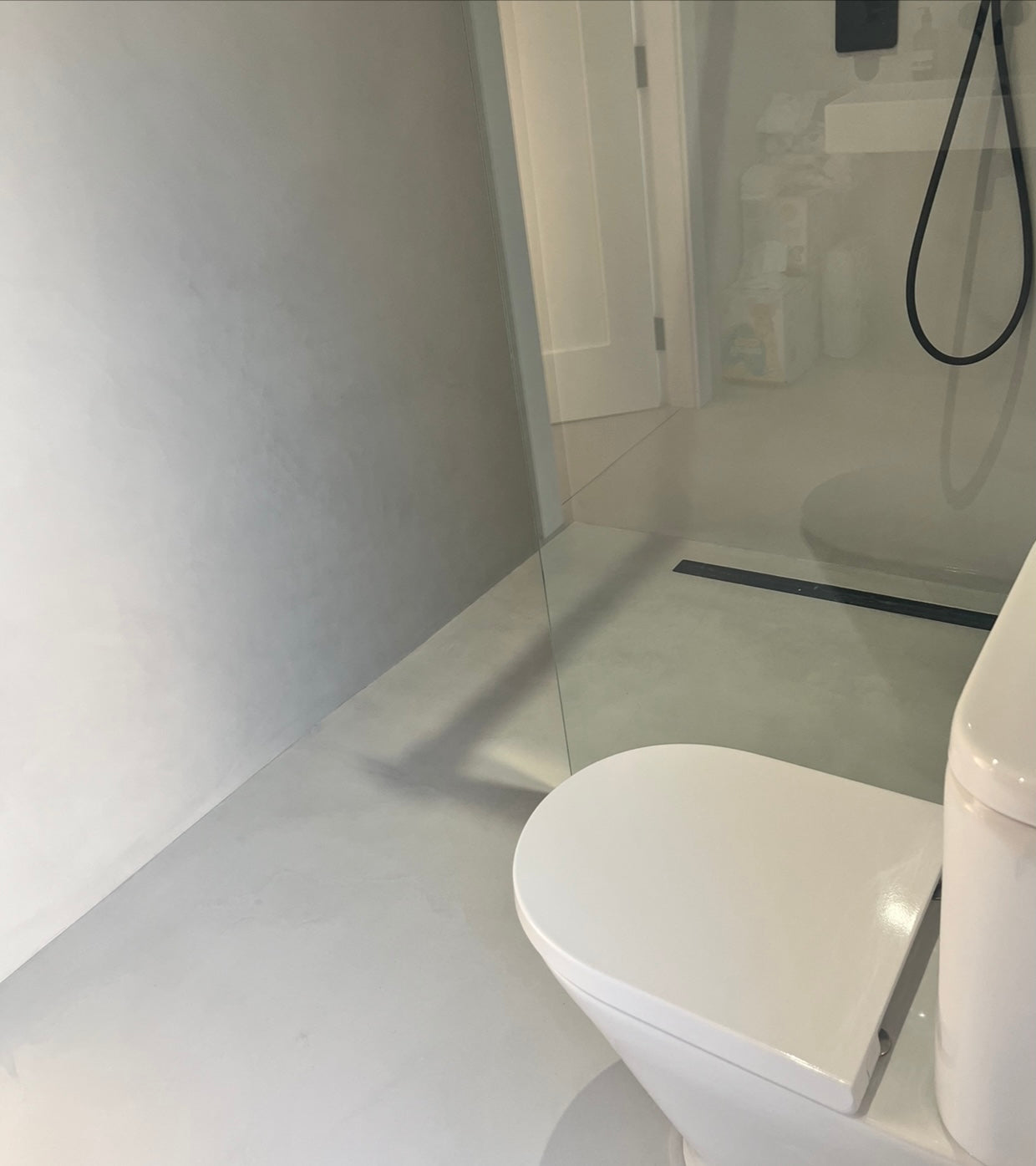Does Microcement Crack?

Share
Microcement, otherwise known as micro concrete or microtopping, is an increasingly popular material due to its versatility and seamless finish. As a construction material, however, it does have certain characteristics that are not ideal, for example, the risk of potential cracking.
However, as a complex system with multiple layers, it is good to understand what exactly could lead to cracking and what can be done to avoid it.
Here's a detailed look at whether Microcement cracks and what can influence this outcome:
Factors That Influence Cracking in Microcement
1.Substrate Condition:
Stability: Whether or not a substrate is stable enough for the Microcement application needs to be assessed by the applicator. If it is prose to movement or has larger existing cracks that can’t be repaired, it can after the microcement finish.
Preparation:
Adequate preparation of the substrate, including levelling, priming, the reparation of any damage and cleaning can make a big difference to the quality and durability of the application.
2.Application Process:
Mixing and Consistency: Following the exact ratios given in the instructions and making sure the mixture even and consistent without any lumps is very important, as it could lead to weakness in the structure of microcement.
Layer Thickness: Applying each layer evenly, without any extra material getting to certain parts is crucial to ensure even bonding and curing.
Curing Time: Leaving enough time for the curing process between layers also ensures the durability of the application, and not calculating enough time for that could lead to potential damage in the future.
3.Environmental Factors:
Temperature and Humidity: It’s important to ensure consistent temperature and humidity during the application and curing process, as it can impact the microcement’s performance, and cause shrinkage and cracks.
Thermal Expansion: Considering the expansion and contraction of the material is important to consider, and try to keep the application environment under control.
4.Structural Movements:
Building Settling: New buildings or renovations can experience settling, which may cause movement in the structure and result in cracks in the microcement.
Vibrations: Consider the vibrations that certain areas are subject to, to take precautions.
Preventative Measures
1.Professional Installation:
Microcement is a very technical product with a complex application process. Hiring experienced professionals, who know and understand the theoretical as well as the practical aspects of Microcement, is essential to ensure the system is applied correctly.
2.Proper Substrate Preparation:
If any damage is not fixed and repaired, there is a risk of it leading to weakness in the structure of the Microcement and cause cracking. A clean, stable and prepared substrate is crucial for a quality application.
3.Controlled Application Environment:
Ensuring consistent temperature and humidity levels will help with an even application, without any issues related rapid drying and thermal expansions or contractions.
4.Use of Reinforcement:
Adding an anti-crack system to the base coat will add strength and flexibility to the structure of microcement, reducing the likelihood of cracks.
Conclusion
Despite its functional and aesthetic properties, with Microcement there is a potential risk of cracking, especially if the preparation work was not done properly.
Understanding the factors that can lead to damage means that precautions can be taken, reducing the risk of any damage in the future. This means assessing and preparing the substrate, and following professional advice for the application of the material.
For any advice about our Microcement Systems, be sure to contact sales@imperaitalia.com.
If you are interested in learning the professional application of Microcement, check out our beginner and advanced courses!
